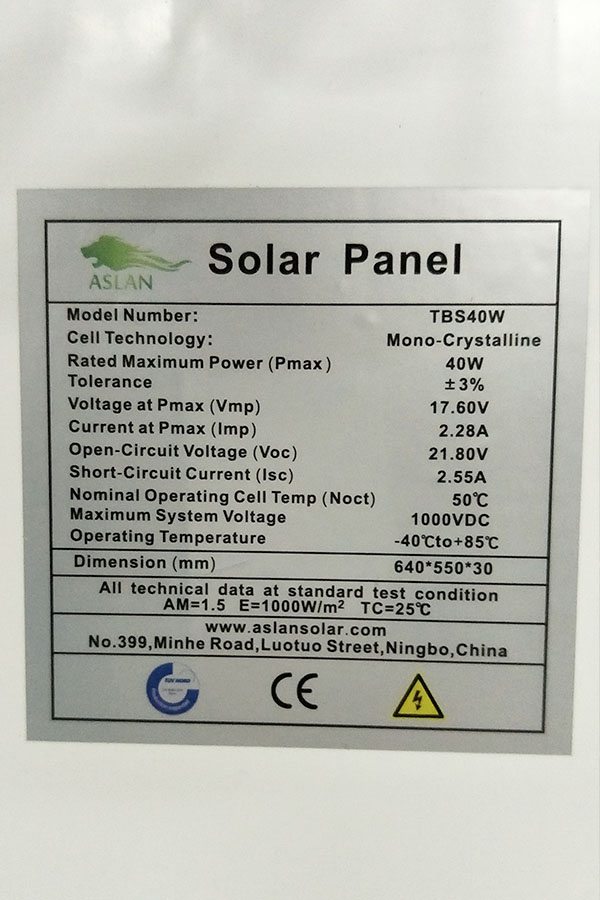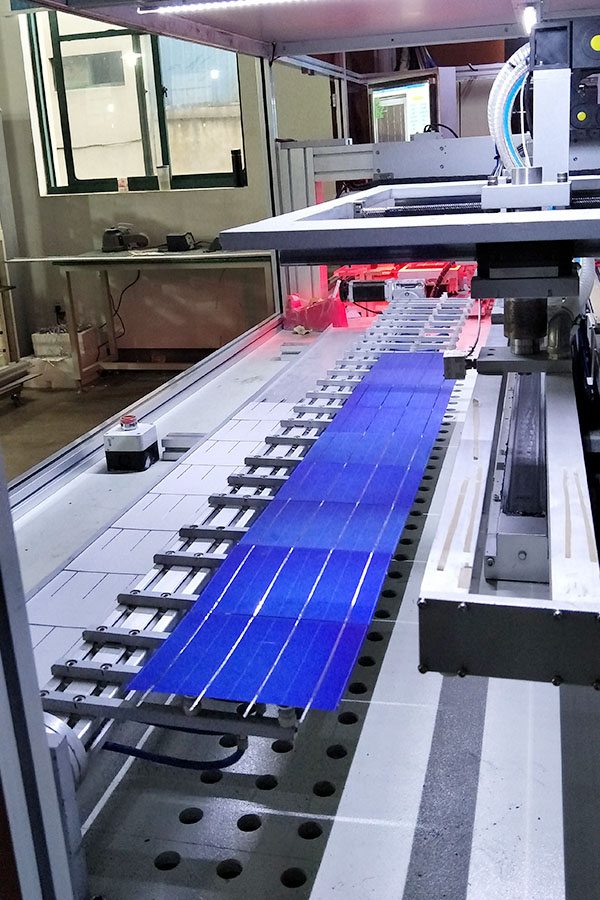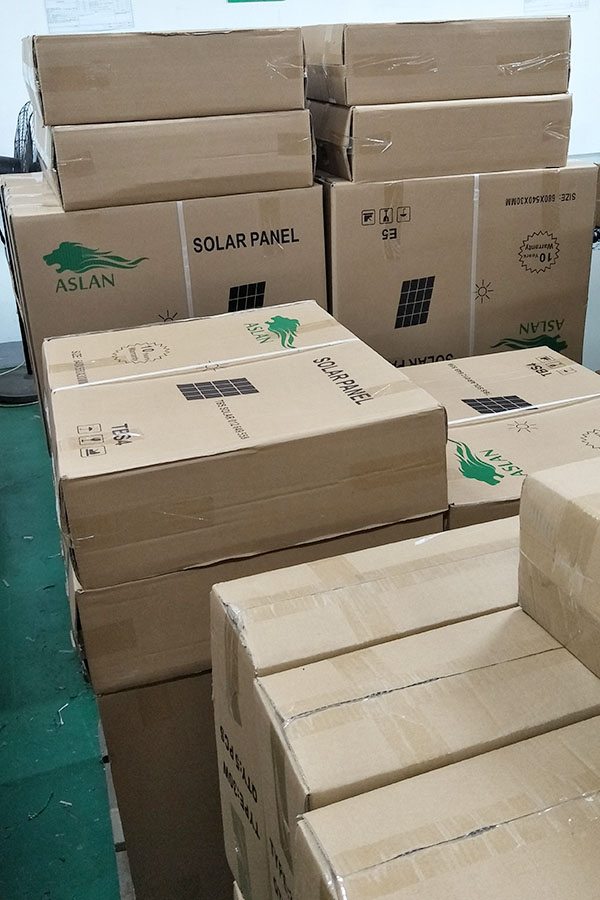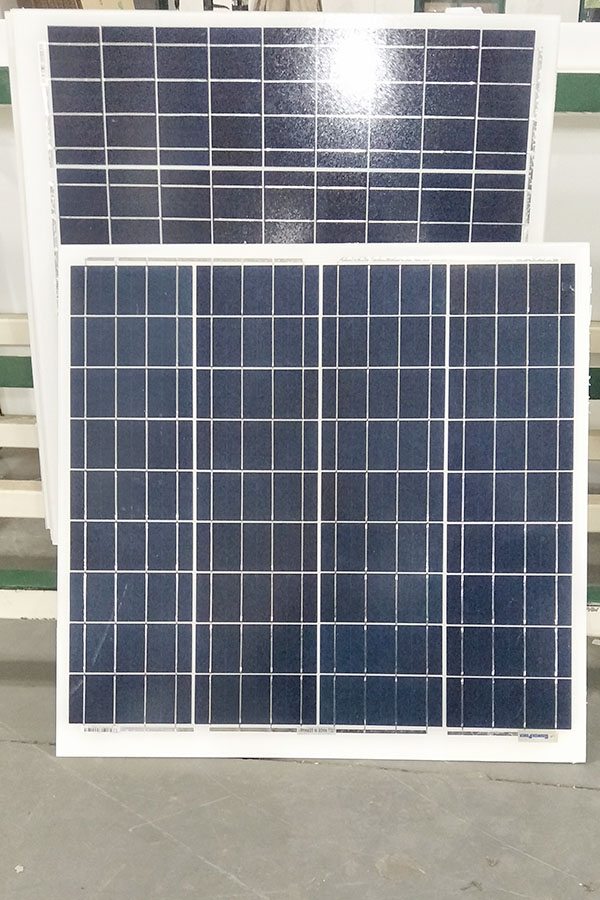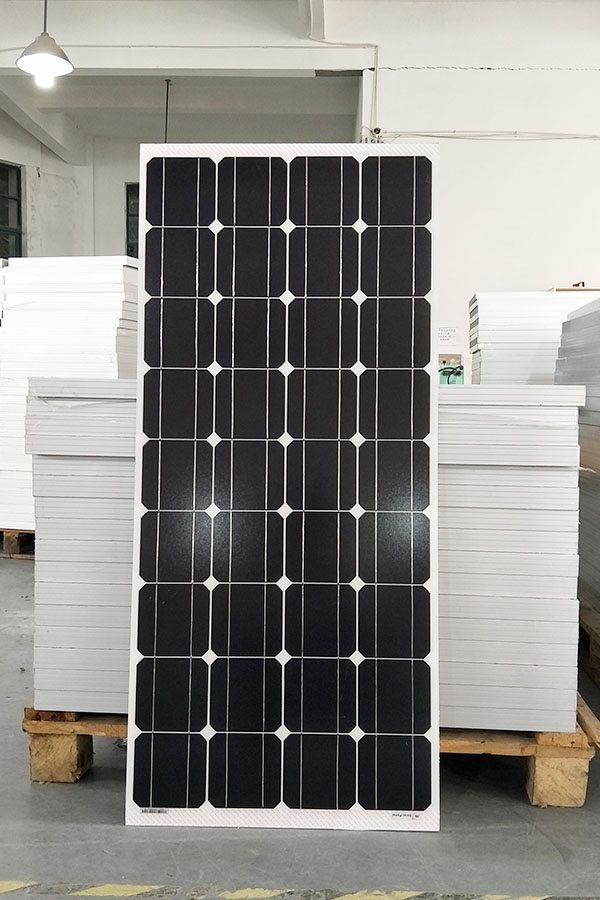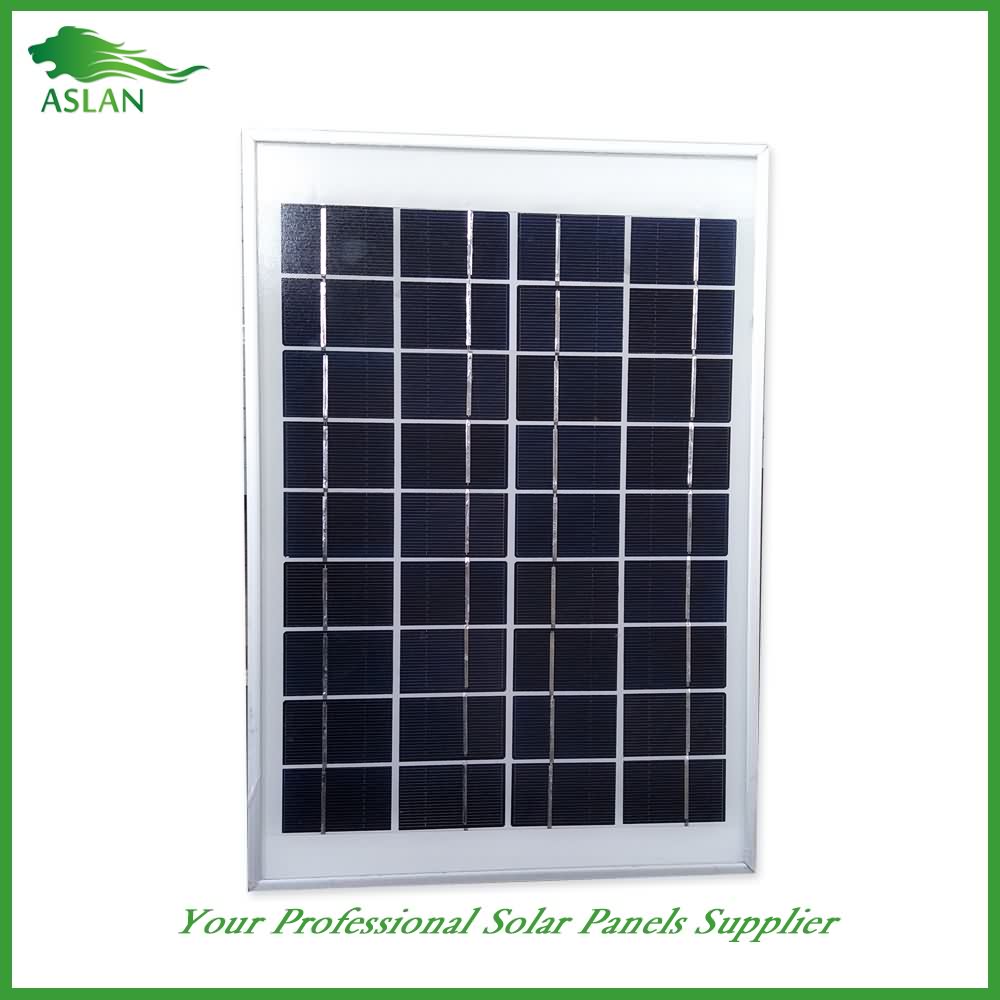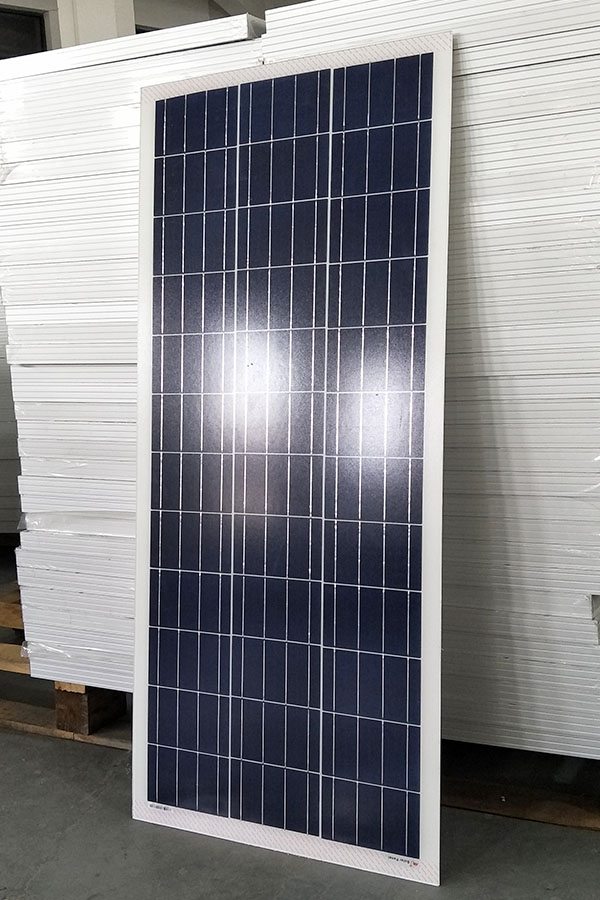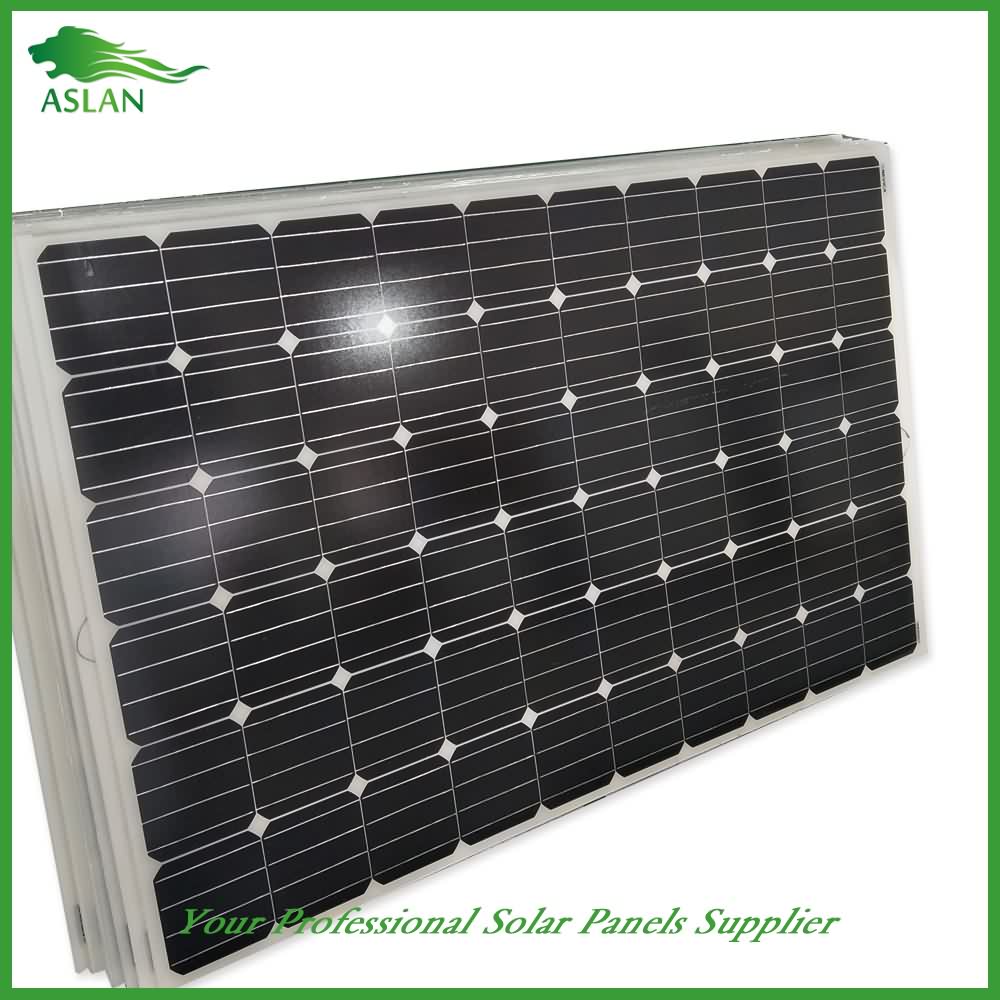2016 Latest Design Poly-crystalline Solar Panel 100W for Cyprus Factories
Short Description:
We aim to find out quality disfigurement from the production and supply the best service to domestic and overseas customers wholeheartedly for 2016 Latest Design Poly-crystalline Solar Panel 100W for Cyprus Factories, We look forward to establish a long-term business relationship with your esteem co-operation.
Technical parameter
Maximum Power(W) 100W
Optimum Power Voltage(Vmp) 17.87V
Optimum Operating Current(Imp) 5.60A
Open Circuit Voltage(Voc) 21.45V
Short Circuit Current(Isc) 6.17A
Mechanical Characteristics
Cell Type Polycrystalline 156x104mm (6 inch)
No of Cell 36 (4x9pcs)
Dimensions 1120x678x35mm
Weight 9.7KGS
Front Glass 3.2mm,High Transmission, Low Iron,Tempered Glass
Junction box IP65 Rated
Output Cable TUV 1×4.0mm2/UL12AWG,Length:900mm
Temperature and Coefficients
Operating Temperature(°C): -40°C ~ + 85°C
Maximum System Voltage: 600V(UL)/1000V(IEC) DC
Maximum Rated Current Series: 15A
Temperature Coefficients of Pmax: -0.435%
Temperature Coefficients of Voc: -0.35%
Temperature Coefficients of Isc: 0.043%
Nominal Operationg Cell Temperature (NOCT): 47+/-2°C
Materials of solar panel
1).Solar Cell——Polycrystalline solar cell 156*52mm
2).Front Glass——-3.2mm, high transmission, low iron, tempered glass
3).EVA——-excellent anti-aging EVA
4).TPT——-TPT hot seal made of flame resistance
5).Frame——anodized aluminum profile
6).Junction Box——-IP65 rated, high quality, with diode protection
Superiority: high quality anodized aluminum frame, high efficiency long life, easy installation, strong wind resistance, strong hail resistance.
Features
1. High cell efficiency with quality silicon materials for long term output stability
2. Strictly quality control ensure the stability and reliability, totally 23 QC procedures
3. High transmittance low iron tempered glass with enhanced stiffness and impact resistance
4. Both Poly-crystalline and Mono-crystalline
5. Excellent performance in harsh weather
6. Outstanding electrical performance under high temperature and low irradiance
Quality assurance testing
Thermal cycling test
Thermal shock test
Thermal/Freezing and high humidity cycling test
Electrical isolation test
Hail impact test
Mechanical, wind and twist loading test
Salt mist test
Light and water-exposure test
Moist carbon dioxide/sulphur dioxide
Here are the real life numbers and details for solar panel power output at my off grid homestead. True solar panel output is affected by many things including weather, wire sizes, and more.
There has been a lot of recent discussion about my solar energy system and what seems to be the weak point in the system. People are theorizing what may be wrong with my solar power output. I have heard anything from wires, to connectors, to defective panels, bad batteries and more.
But the real deal is that solar panels rarely ever put out their full rated power. Only under ideal conditions will you see full solar panel output. I have 800 watts of solar panels installed at my off grid solar homestead right now but I am only averaging between 8 to 150 watts in the last two weeks at any given time.
Why is this?
It is the weather. I have not seen the sun for more than a couple minutes in over two weeks. When it is not raining it is partly to mostly cloudy recently. This greatly affects solar panel output.
I have my panels connected in series to give me about 130 volts DC at 16 amps running through the wires in my meadow to my off grid RV. This is fine for these wires. There is very little loss in the wires. But there is some loss. Here is where you will lose some of your expected solar power production.
I have an MPPT solar charge controller. This is a Maximum Power Point Tracking solar charge controller. This gives me the maximum power output of my solar panels at any given time. A standard PWM (Pulse Width Modulated) charge controller will have a lot more loss of power between the solar panels and the battery bank.
My batteries are doing fine. I have 600 Amp Hours of battery capacity.
The problem is that I do not get much sun all day. Also with stationary solar panels you will only get maximum solar power output for a couple hours per day when the sun is directly overhead and shining directly on your solar panels. 800 watts of solar panels will not give you 800 watts of power output in the morning and the evening hours or during cloudy or rainy periods. You will see much lower numbers during these periods.
A solar tracker will increase your total output considerable. I hope to set up a solar tracker next year and improve my overall solar panel output. This will rotate the solar panels to track into the sun from morning till evening, giving the maximum solar panel output during all hours of the day. But again, clouds and rain will decrease total output.
There is also a lot of discussion about wind turbines. These work best when they are above the tree line and not restricted by any other obstacles. I need to get a tower that is at least 60 feet up in the air in order to see the best wind power output.
I do hope to set up a wind turbine tower soon. Next year I also plan to thin out the trees to maximize solar and wind power output.
Trees will reduce power output of both solar and wind power.
Follow my daily progress on the path to self sufficiency on my off grid solar homestead.
https://www.youtube.com/user/techman2015/playlists?view=50&shelf_id=10&sort=dd
Please donate to help keep The Off Grid Project going: https://www.paypal.com/cgi-bin/webscr?cmd=_s-xclick&hosted_button_id=3TQSWXLLRZ6HW
Join The Off Grid Project and The Do It Yourself World forum and share your ideas, tips and projects.
http://www.thediyworld.com/forum
The Off Grid Project is presented by The Do It Yourself World.
http://www.TheDIYworld.com
Experiments and projects in off grid living, alternate energy, survival, hiking and more.
Solar Panels Birkenhead – FREE solar panel quotes at http://go-solar.uk
Are you on the lookout for local solar panel companies in the UK?
Perhaps you need to know how much do solar panels cost.
Read on for more details about solar panel installation.
Solar panels utilise a potent yet free energy source – our sun. In every hour, the sun sends more energy to our earth’s landmass than the world uses in a year.
There are two leading varieties of solar panels. Although they can appear similar, and each constitute panels on your roof, solar water heating and PV solar are quite different and so is the solar panel installation.
Solar PV panels utilise the radiant power from the sun and convert it into electricity for use in your house or business or export onto the national grid.
Solar panels are manufactured from a thin sheet of semi-conducting material between a sheet of glass and a polymer resin. When exposed to day light, the semi-conducting material is energised producing electricity.
There are 4 mains types of PV panels: mono-crystalline, polycrystalline, hybrid and amorphous silicon. Each are constituted from silicon, and vary in the way the silicon is fabricated.
Solar water heating panels take the light and heat radiated from the sun to heat up water in the heating system and hot water supply.
Solar panels merit considering if you have a primarily south facing roof with little or no shade, and you are not contemplating moving house in the immediate future.
You can add solar thermal panels to several existing hot water installations, but you’ll oftentimes|usually} need to install an extra cylinder for pre heated water. Discuss with your local solar panel installers for further details.
Advantages of solar PV panels include only day light is required to create energy, they can be fed in to the national grid and surplus electricity sold back to an electricity company, they can cut {a typical|an average| home electricity bill by about 40%, they provide additional income, as the Feed-in Tariff provides cash payments to households that produce their own electricity using a renewable technology.
Advantages of solar water heating systems include they may supply you with around one third of your hot water requirements, can save you around £65 to £125 from your water heating expenses, maintenance costs are quite low as most solar water heating systems come with a five to 10-year guarantee and need little maintenance, and in England solar water installations is no longer need planning permission in most instances – and Wales, Scotland and Northern Ireland are in the process of discussing introducing similar action.
So if you are looking for the best solar panel price or the cost of solar panels for your home or business, get a free quote at http://www.go-solar.uk
Find more companies here: https://www.youtube.com/playlist?list=PLNUoCjB8Bf6h8zCo_bJyHyvnTsaL6oRyH
—
Solar Panels Birkenhead


